Consider the function f(x,y) that equals two sigma (ΣΣ) where i ranges from 1 to 10 and (first sigma) and j ranges from 1 to 10 (second sigma) of the quantity {ix^2 + jy^3)
I believe the first sigma would be an inner loop and the second sigma an outer loop, but I am having trouble rewriting this into Python.
How can I convert this into Python?
